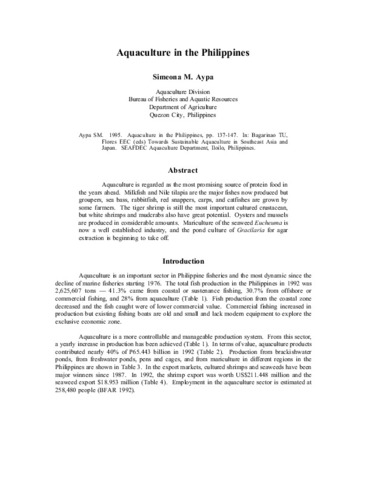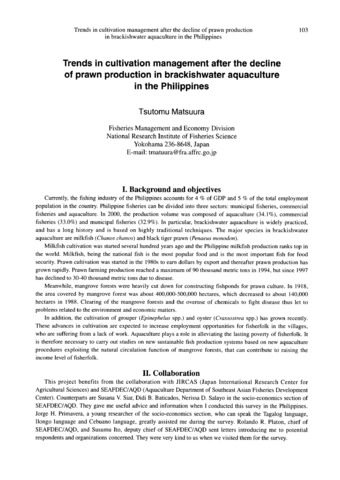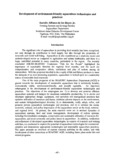The Philippine aquaculture industry
- Global styles
- MLA
- Vancouver
- Elsevier - Harvard
- APA
- Help

Date
1988Page views
32,014ASFA keyword
seed (aquaculture) 
shrimp culture
pond culture
mollusc culture
mussel culture
seed production
oyster culture
aquaculture
sustainability
brackishwater aquaculture
aquaculture economics
aquaculture enterprises
aquaculture development
breeding
fisheries
seaweed culture
mariculture
freshwater aquaculture
breeding stock
fish culture
fish ponds

shrimp culture

pond culture

mollusc culture

mussel culture

seed production

oyster culture

aquaculture

sustainability

brackishwater aquaculture

aquaculture economics

aquaculture enterprises

aquaculture development

breeding

fisheries

seaweed culture

mariculture

freshwater aquaculture

breeding stock

fish culture

fish ponds

AGROVOC keyword
Taxonomic term
Metadata
Show full item record
Share
Abstract
The aquaculture sector of the Philippine fishing industry registered the highest growth rate of 12.5% in 1977-1986. The contribution of aquaculture to the total fish production was equivalent to 24% in 1986 compared to only 85 in the early 1970's. In terms of quantity, the mariculture subsector registered the highest growth rate of 10.2% in 1982-1986, whereas in terms of value the brackishwater fishpond subsector showed the highest growth rate of 33%. Meanwhile, freshwater aquaculture production exhibited a negative growth rate due to reduction of activities in Laguna de Bay and the slow expansion in hectarage of the commercial freshwater fishponds.
Research by several agencies concentrated heavily on the culture of milkfish (Chanos chanos), tilapia (Oreochromis niloticus), Chinese carps (Aristichthys nobilis and Hypophthalmichthys molitrix), tiger prawn (Penaeus monodon), and sea bass (Lates calcarifer). Innovations in seaweed, oyster, and mussel farming are also discussed.
Research directions are presented to assure an ecologically sustainable growth in aquaculture with emphasis on countryside development.
Suggested Citation
Camacho, A. S., Macalincag-Lagua, N. (1988). The Philippine aquaculture industry. In J. V. Juario & L. V. Benitez (Eds.), Perspectives in Aquaculture Development in Southeast Asia and Japan: Contributions of the SEAFDEC Aquaculture Department. Proceedings of the Seminar on Aquaculture Development in Southeast Asia, 8-12 September 1987, Iloilo City, Philippines. (pp. 91-116). Tigbauan, Iloilo, Philippines: SEAFDEC, Aquaculture Department.
Type
Conference paperISBN
971851113XCollections
- ADSEA '87 [20]
Related items
Showing items related by title, author, creator and subject.
-
Aquaculture in the Philippines
Aypa, Simeona M. (Aquaculture Department, Southeast Asian Fisheries Development Center, 1995)Aquaculture is regarded as the most promising source of protein food in the years ahead. Milkfish and Nile tilapia are the major fishes now produced but groupers, sea bass, rabbitfish, red snappers, carps, and catfishes ... -
Series: JIRCAS Working Report;No. 35
Trends in cultivation management after the decline of prawn production in brackishwater aquaculture in the Philippines
Matsuura, Tsutomu (Japan International Center for Agricultural Sciences, 2003)A survey was conducted in Regions 1 (Ilocos), 3 (Central Luzon), 6 (Western Visayas) and 7 (Central Visayas) of the Philippines between 20 May and 25 July 2002. Questionnaires were distributed and interviews were performed ... -
Development of environment-friendly aquaculture technologies and practices
de los Reyes Jr., Aurelio Alfonso (Japan International Research Center for Agricultural Sciences, 2002)The significant role of aquaculture in providing food security has been recognized, not only through its contribution to food supply, but also through the promotion of economic and social well-being. Aquaculture is also ...





